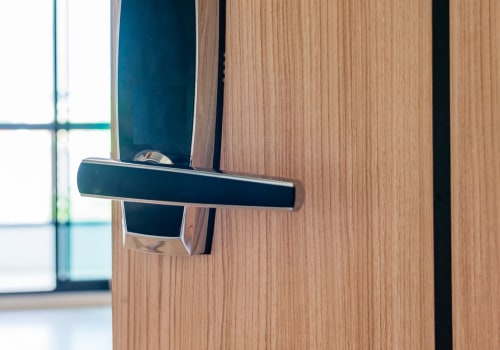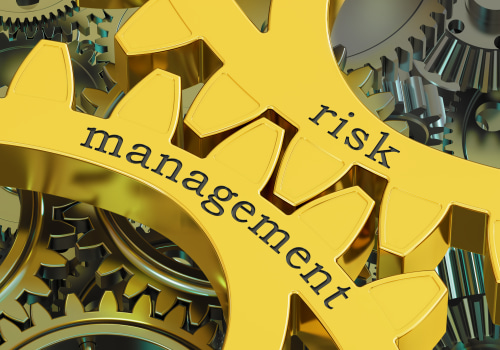When it comes to creating an efficient and reliable IT infrastructure, server hardware selection and deployment is an integral part. In order to ensure HIPAA compliance, an organization must have the right server hardware to maximize performance and security. Selecting the right server hardware and deployment strategy requires careful consideration of cost, performance, scalability, and reliability. This article will provide an overview of what to consider when selecting server hardware and provide tips for successful deployment.
Server hardware selection and deployment
is an essential step in ensuring the security and confidentiality of healthcare data.Selecting and deploying the right server hardware is critical in order to meet the data requirements and protect the integrity of the system. In order to select and deploy the appropriate server hardware for HIPAA IT Infrastructure design and implementation, several factors must be considered. The first step is to understand the server specifications and assess the environment and data requirements. This includes determining the type of server needed, the amount of RAM, storage space, number of processors, and other features.
It is important to make sure that the server meets all the requirements of the system, as well as any regulatory requirements. Additionally, it is important to consider the environmental factors such as temperature, humidity, and power requirements. Once these factors are determined, the next step is to select the appropriate server hardware. Once the server hardware has been selected, it must be deployed.
This includes connecting it to the network, configuring any necessary settings, and installing any necessary software. It is important to ensure that all security controls are in place before deploying the server hardware. This includes setting up firewalls, anti-virus protection, and other security measures. Additionally, it is important to test the server hardware prior to deployment to ensure that it is functioning properly.
Once the server hardware has been deployed, it must be maintained. This includes regularly checking for updates and patches, performing backups, monitoring performance and availability, and troubleshooting any issues that may arise. Additionally, it is important to regularly review security controls to ensure that they are up-to-date and effective. Selecting and deploying server hardware for HIPAA IT Infrastructure design and implementation is a complex process that requires careful consideration.
While there are many potential benefits associated with selecting and deploying server hardware correctly, there are also potential risks if done incorrectly. These risks include data loss or corruption due to inadequate security controls, system malfunction due to inadequate configuration or incorrect installation, or even exposure of confidential information due to poor maintenance practices. Therefore, it is important to ensure that all steps are taken when selecting and deploying server hardware for HIPAA IT Infrastructure design and implementation.
Deploying Server Hardware
Deploying Server Hardware for HIPAA IT Infrastructure design and implementation is an essential step to ensure the security and confidentiality of healthcare data. When deploying server hardware, the first step is to install the server hardware.This includes connecting cables, plugging in power supplies, and ensuring that all components are properly connected. Additionally, it is important to configure the network settings on the server so that it can communicate with other devices on the network. Once the server hardware is installed and connected, security controls need to be configured. This includes setting up firewalls, intrusion detection systems, and other security measures to prevent unauthorized access to the server and any confidential data stored on it.
It is also important to regularly test the server hardware to ensure that it is functioning properly. In addition to following best practices for deploying server hardware, it is also important to consider any potential risks associated with inadequate server hardware selection and deployment. Poorly configured security controls or inadequate hardware can lead to data breaches and other issues, so it is essential to ensure that the hardware is properly selected and deployed.
Maintaining Server Hardware
Once server hardware has been selected and deployed, it is essential to properly maintain it in order to ensure that your organization's data and systems remain secure and reliable.The best practices for maintaining server hardware include monitoring performance metrics, applying security patches and updates, and performing regular backups. It is important to continuously monitor performance metrics such as CPU utilization, memory usage, disk read/write speed, and network bandwidth. Keeping an eye on these performance metrics can help you identify potential issues or security vulnerabilities before they become major problems. Applying security patches and updates to server hardware is also essential.
It is important to keep the software and firmware on your servers up to date so that any security holes are patched and the system remains secure. Finally, it is important to perform regular backups of your server hardware. This will ensure that any data lost due to a hardware failure or security breach can be recovered quickly and easily. Poor maintenance of server hardware can lead to serious consequences, such as data breaches or system outages.
It is important to be aware of the potential risks associated with inadequate maintenance in order to ensure that your organization's data and systems remain secure and reliable.
Assessing Environment and Data Requirements
When selecting server hardware for HIPAA IT infrastructure design and implementation, it is important to assess the environment and data requirements to ensure the secure and confidential handling of healthcare data. This includes understanding the physical location of the server and the anticipated load on the server. It is also important to consider any potential risks associated with selecting inadequate server hardware. When assessing the environment, it is important to consider factors such as temperature and humidity, as well as any other environmental factors that may affect the performance and reliability of the server. Additionally, a thorough understanding of the data requirements is essential.This includes considering the type of data that will be stored on the server, as well as its expected size and access speed. When assessing the anticipated load on the server, it is important to consider factors such as the number of users that will be accessing the server, as well as the type of applications and services that will be running on it. This information can help inform decisions regarding which type of server hardware is best suited for the job. Additionally, it is important to consider any potential security risks associated with inadequate server hardware selection and deployment. In conclusion, selecting and deploying server hardware for HIPAA IT infrastructure design and implementation is an essential step in ensuring the security and confidentiality of healthcare data. It is important to take into account factors such as environmental conditions, data requirements, and anticipated load when selecting server hardware, as well as any potential risks associated with inadequate server hardware selection and deployment.
Selecting the Appropriate Server Hardware
Selecting the right server hardware for HIPAA IT Infrastructure design and implementation is essential for ensuring the security and confidentiality of healthcare data.When selecting server hardware, it is important to understand key specifications such as processor type, memory capacity, storage capacity, power consumption, and cooling requirements. It is also essential to ensure that any potential risks associated with inadequate server hardware selection and deployment are taken into account. When choosing the right server hardware, it is essential to consider the specific needs of the IT infrastructure. Processor type should be chosen based on the type of workloads that will be running on the server. Memory capacity should be chosen in accordance with the requirements of the workloads.
Similarly, storage capacity should be chosen based on the data needs of the IT infrastructure. In addition to performance considerations, other factors should also be taken into account when selecting server hardware. Power consumption should be considered when choosing a server as this may have an impact on energy costs. Similarly, cooling requirements should also be taken into consideration when selecting server hardware as this may affect both energy costs and the overall performance of the server. Finally, it is important to consider any potential risks associated with selecting inadequate server hardware. Poorly chosen server hardware can lead to decreased performance and reliability, as well as increased security risks.
Therefore, it is essential to ensure that any potential risks are taken into account when selecting server hardware for HIPAA IT Infrastructure design and implementation.
Understanding Server Specifications
When selecting server hardware, it is important to understand the server specifications and how they will affect the performance of the hardware. Server specifications include the processor type, memory capacity, storage capacity, power consumption, and cooling requirements.Processor Type
The processor type is a key factor in determining the performance of the server hardware. It is important to choose a processor that is powerful enough to handle the workloads of the server.Additionally, it is important to consider whether the processor is multi-core or single-core, as this can have a significant impact on the performance of the server.
Memory Capacity
The memory capacity of a server is important for ensuring that it can handle multiple tasks at once. It is important to choose a server with sufficient memory capacity for the intended workloads. Additionally, it is important to choose a server with enough RAM for the operating system.Storage Capacity
The storage capacity of a server is important for storing data and applications.It is important to choose a server with sufficient storage capacity for the intended workloads. Additionally, it is important to consider the speed of the storage, as this can have an impact on the performance of the server.
Power Consumption
The power consumption of a server is important for ensuring that it is not overloading the power supply. It is important to choose a server with an efficient power supply that will not draw too much power from the power grid. Additionally, it is important to consider any additional power requirements for any additional components.Cooling Requirements
The cooling requirements of a server are important for ensuring that it does not overheat.It is important to choose a server with adequate cooling requirements for the intended workloads. Additionally, it is important to consider any additional cooling requirements for any additional components. Poor server hardware selection and deployment can have serious consequences, such as data loss or security breaches. It is therefore important to ensure that the server hardware is correctly selected and deployed in order to ensure optimal performance and security. Selecting and deploying server hardware for HIPAA IT Infrastructure design and implementation is an essential step in ensuring the security and confidentiality of healthcare data. The best practices for selecting and deploying server hardware include understanding server specifications, assessing environment and data requirements, deploying server hardware, and maintaining server hardware.
Failing to follow these best practices can result in potential risks to the security and confidentiality of healthcare data. In conclusion, selecting and deploying server hardware for HIPAA IT Infrastructure design and implementation requires careful consideration of the server specifications, environment, and data requirements. Following the best practices outlined in this article helps to ensure that healthcare data is safeguarded and confidential.








Leave Message